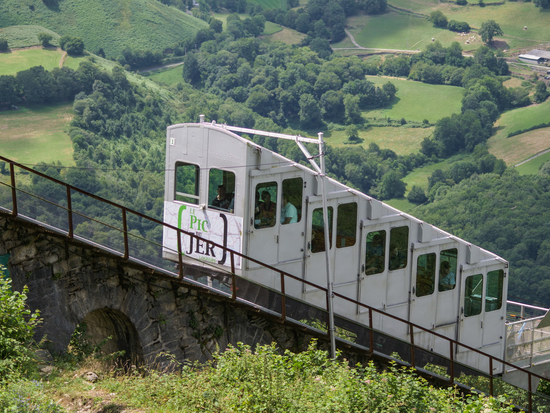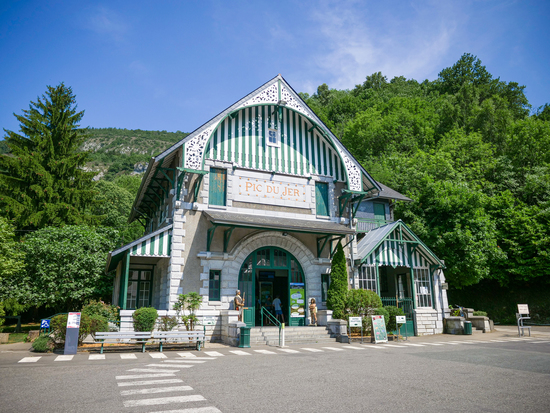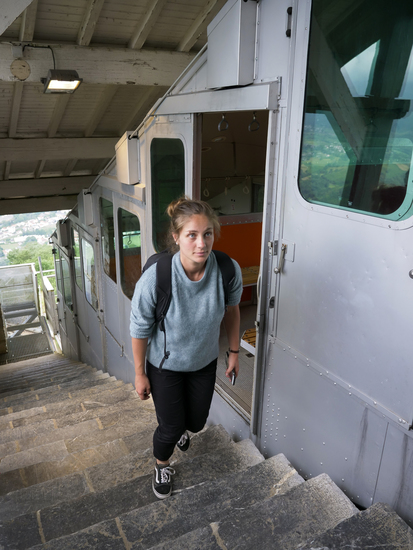How does the funicular work ?

How does the funicular work ?
The funicular, derived from the Latin "funiculus", or "small rope", was brought to us by the engineer Stephenson in 1825, who invented it to help steam engines scale the English hillsides.
A funicular is a fixed guideway transit system equipped with vehicles which travel along a sloped track, in which a cable provides the traction needed to tackle the incline.
The motor powering the cable is located in the top station. Propulsion is typically provided by an electric motor linked to a speed-reducing gearbox, which causes the drive pulley to move.
The service brake (FS1) and the emergency brake (FS2) are situated close to the drive pulley. Most commonly, a funicular travels on a single track with a double section running through the middle to allow vehicles to pass one another.
This is the passing loop, and it works without the need for moving switch parts thanks to the specific layout of the vehicle axles.
They are equipped with grooved wheels which guide the cars along the loop's outer continuous track, and have flat wheels suitable for crossing the centre of the turnout on the loop's inside track. T
his arrangement of the axles is the opposite from one car to another, allowing the cars to cross without human involvement and with no risk of the cars colliding or the cables crossing one another.
The type of passing loop used on the Pic du Jer is No. 3. If the cable tie were ever to break, large mechanical claws situated on the chassis close to the grooved wheels would instantly grip onto the track and stop the whole system.
Key stats

Key stats
Altitude at lower station (departure): 450m
Length of track: 1,110m
Slopes: from 28% to 56%
Track gauge: 1m
Two 70m and 65m tunnels cut in compact limestone
The trench is 400m long and 10m deep
Viaduct: 12 arches, 200m long, 4m wide, 18m high
Altitude at higher station (arrival): 888m
Incline: 438m

